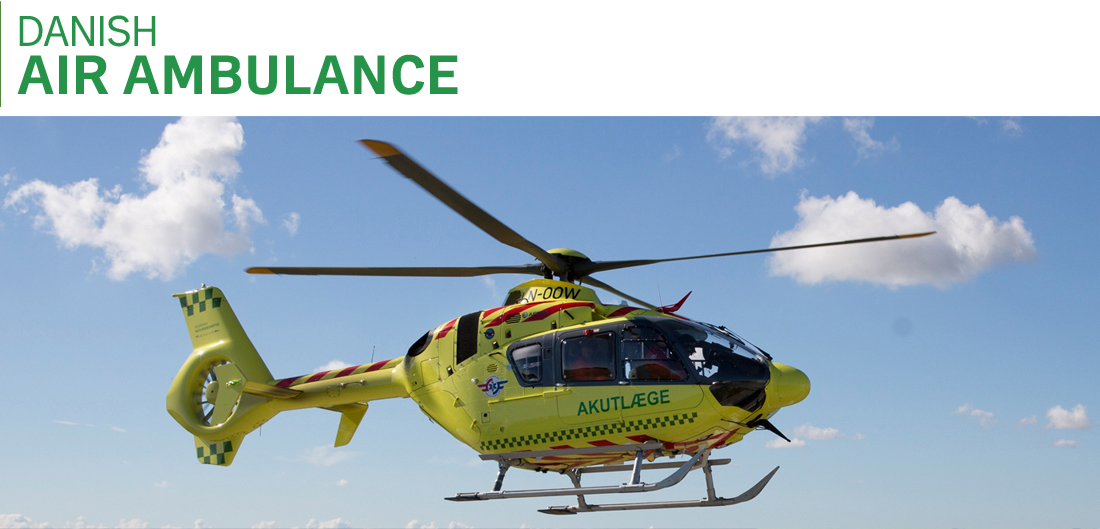The four Danish emergency medical helicopters are of the type EC 135 P2e and H135, which are constructed by Airbus Helicopters.
The external dimensions allow for safe landing close to the patient, thus saving valuable time. The lower the weight of the helicopters, the less risk of sinking down on soft ground.
The cabin size provides a good ergonomic working environment for the physician, who can reach all medical equipment and perform all treatment scenarios from his or her strapped position.
Speed
The recommended cruising speed of the emergency medical helicopter is approximately 240 km/h at maximum weight.
The helicopter takes off in Performance Class 1 Clear Heliport Sea Level (ISA) and flies at mean sea level (MSL) under international standard atmospheric conditions (ISA) and below 0-wind conditions.
When the helicopter is flying at normal speed, the two motors burn 210 kg of fuel per hour.
Communication
The helicopters are equipped with:
- The latest Garmin GTN750 GPS navigation system
- The latest generation of NVG (night-vision goggles) and powerful search lights
- The latest Euronav 7 moving map, incl. complete obstruction database
- Telephonics RDR1600 weather and search radar
With the above equipment, all the helicopters are certified and approved to fly:
- Using NVIS (night vision imaging system, NVG 3rd generation, i.e. night vision googles and maximum safety in the dark)
- GPS PinS (1st generation, a non-precision instrument for approach to the hospital/HEMS base etc.)
- GPS PinS LPV (2nd generation, a precision instrument approach to the hospital/HEMS base, etc.)
- RNP 0.3 in all flight phases (best available criteria for IFR low level route network structure)
Noise level
The EC135 P2e and the H135 are among the most noiseless helicopter in their weight class and has some of the lowest noise emission, measured in decibels, on the market.
Examples of noise level, see EASA record no.: D339
